Assessing Changes in Mountain Treeline Ecotones over 30 Years Using CNNs and Historical Aerial Images
Abstract
1. Introduction
2. Materials and Methods
2.1. Study Areas
2.2. Data Sets
2.2.1. Aerial Images
2.2.2. ALS Data and VHM
2.3. Data Processing
2.3.1. Image Patches
2.3.2. Forest Structure Classes
2.3.3. Data Labelling
2.4. Training and Validation Data
2.4.1. Training Data
- Generation of the first training (80%) and validation (20%) data set using Img_T2 from study area 1. The data labeling was conducted based on the CHM obtained from ALS data and the CC percentage of each image patch;
- Model training and prediction based on the first available data set for Img_T1 of study area 1 and for Img_T1 and Img_T2 of study area 2;
- Interactive addition of all image patches (80% for training, 20% for validation) that were wrongly predicted into the model to increase the model’s generalization;
- Re-running of the model training. At the end, for the first-level training data set (CNN1), there were 11,932 image patches from Img_T2 in study area 1, 227 image patches from Img_T1 in study area 1, 330 image patches from Img_T1 in study area 2, and 60 image patches from Img_T2 in study area 2. Since sufficient training data for the class “group of trees” were not available, we added augmented image patches, e.g., the mirrored images with vertical and horizontal flips, to this class. After these steps, we used 6892 image patches for the class “dense forest”, 2519 image patches for “group of trees”, and 6509 image patches for “other”.
2.4.2. Independent Validation Data
2.5. Methods
2.5.1. Overview of the Classification Approach
- Calculation of Canopy Cover (CC) percentage from CHMs obtained from the ALS point data from 2010 (Img_T1) in study area 1 and active interaction and labeling of each potential image patch (50 × 50 m);
- Training using a hierarchical Convolutional Neural Network (CNN) using the information on the labeled image patches;
- Classification of images from 1980 (Img_T1) from study area 1 and from 1980 (Img_T1) & 2009 (Img_T2) from study area 2 based on trained CNNs;
- Active addition of training samples from wrongly predicted image patches, e.g., predicted as class “other” instead of “group of trees”.
- Evaluation of the change in forest cover between the two time points.
2.5.2. AlexNet
2.5.3. Hierarchical Classification Strategy
2.5.4. Adjusting Historical Images
2.5.5. Disagreement Analysis
3. Results
3.1. Classifications
3.2. Disagreement Analysis
3.3. Vegetation Change Depending on Elevation
4. Discussion
4.1. General Aspects of the Proposed Method
4.2. Performance Differences between “Dense Forest” and “Group of Trees”
4.3. Impacts on Classification
4.4. Forest Cover Change Per Elevation Category
4.5. Future Work
5. Conclusions
Author Contributions
Funding
Acknowledgments
Conflicts of Interest
References
- Song, X.-P.; Hansen, M.C.; Stehman, S.V.; Potapov, P.V.; Tyukavina, A.; Vermote, E.F.; Townshend, J.R. Global land change from 1982 to 2016. Nature 2018, 560, 639–643. [Google Scholar] [CrossRef] [PubMed]
- Chapin, F.S., III; Mcguire, A.D.; Randerson, J.; Pielke, R.; Baldocchi, D.; Hobbie, S.E.; Roulet, N.; Eugster, W.; Kasischke, E.; Rastetter, E.B.; et al. Arctic and boreal ecosystems of western North America as components of the climate system. Glob. Change Biol. 2000, 6, 211–223. [Google Scholar] [CrossRef] [PubMed]
- Körner, C.; Paris, C.; Banzet, P. Alpine Plant Life: Functional Plant Ecology of High Mountain Ecosystems; With 47 Tables; Springer: Berlin/Heidelberg, Germany, 2003. [Google Scholar]
- Colwell, R.K.; Brehm, G.; Cardelús, C.L.; Gilman, A.C.; Longino, J.T. Global warming, elevational range shifts, and lowland biotic attrition in the wet tropics. Science 2008, 322, 258–261. [Google Scholar] [CrossRef] [PubMed]
- Løkken, J.O.; Evju, M.; Söderström, L.; Hofgaard, A. Vegetation response to climate warming across the forest tundra ecotone: Species dependent upward movement. J. Veg. Sci. 2020, 31, 854–866. [Google Scholar] [CrossRef]
- Bolton, D.K.; Coops, N.C.; Hermosilla, T.; Wulder, M.A.; White, J.C. Evidence of vegetation greening at alpine treeline ecotones: Three decades of Landsat spectral trends informed by lidar-derived vertical structure. Environ. Res. Lett. 2018, 13, 10. [Google Scholar] [CrossRef]
- Dirnbäck, T.; Essl, F.; Rabitsch, W. Disproportional risk for habitat loss of high-altitude endemic species under climate change. Glob. Change Biol. 2011, 17, 990–996. [Google Scholar] [CrossRef]
- Morley, P.J.; Donoghue, D.N.M.; Chen, J.-C.; Jump, A.S. Quantifying structural diversity to better estimate change at mountain forest margins. Remote Sens. Environ. 2019, 223, 291–306. [Google Scholar] [CrossRef]
- Bader, M.Y.; Llambí, L.D.; Case, B.S.; Buckley, H.L.; Toivonen, J.M.; Camarero, J.J.; Cairns, D.M.; Brown, C.D.; Wiegand, T.; Resler, L.M. A global framework for linking alpine-treeline ecotone patterns to underlying processes. Ecography 2021, 44, 265–292. [Google Scholar] [CrossRef]
- Manzanedo, R.D.; Pederson, N. Towards a more ecological dendroecology. Tree-Ring Res. 2019, 75, 152–159, 158. [Google Scholar] [CrossRef]
- Virtanen, R.; Luoto, M.; Rämä, T.; Mikkola, K.; Hjort, J.; Grytnes, J.-A.; Birks, H.J.B. Recent vegetation changes at the high-latitude tree line ecotone are controlled by geomorphological disturbance, productivity and diversity. Glob. Ecol. Biogeogr. 2010, 19, 810–821. [Google Scholar] [CrossRef]
- Cserhalmi, D.; Nagy, J.; Kristóf, D.; Neidert, D. Changes in a wetland ecosystem: A vegetation reconstruction study based on historical panchromatic aerial photographs and succession patterns. Folia Geobot. 2011, 46, 351–371. [Google Scholar] [CrossRef]
- Waser, L.T.; Boesch, R.; Wang, Z.; Ginzler, C. Towards Automated Forest Mapping; Springer: New York, NY, USA, 2017. [Google Scholar]
- Pasetto, D.; Arenas-Castro, S.; Bustamante, J.; Casagrandi, R.; Chrysoulakis, N.; Cord, A.F.; Dittrich, A.; Domingo-Marimon, C.; El Serafy, G.; Karnieli, A.; et al. Integration of satellite remote sensing data in ecosystem modelling at local scales: Practices and trends. Methods Ecol. Evol. 2018, 9, 1810–1821. [Google Scholar] [CrossRef]
- Afaq, Y.; Manocha, A. Analysis on change detection techniques for remote sensing applications: A review. Ecol. Inform. 2021, 63, 101310. [Google Scholar] [CrossRef]
- Resler, L.M.; Fonstad, M.A.; Butler, D.R. Mapping the alpine Tteeline ecotone with digital aerial photography and textural analysis. Geocarto Int. 2004, 19, 37–44. [Google Scholar] [CrossRef]
- Hill, R.A.; Granica, K.; Smith, G.M.; Schardt, M. Representation of an alpine treeline ecotone in SPOT 5 HRG data. Remote Sens. Environ. 2007, 110, 458–467. [Google Scholar] [CrossRef]
- Næsset, E.; Nelson, R.F. Using airborne laser scanning to monitor tree migration in the boreal-alpine transition zone. Remote Sens. Environ. 2007, 110, 357–369. [Google Scholar] [CrossRef]
- Carlson, B.Z.; Corona, M.C.; Dentant, C.; Bonet, R.; Thuiller, W.; Choler, P. Observed long-term greening of alpine vegetation—A case study in the French Alps. Environ. Res. Lett. 2017, 12, 114006. [Google Scholar] [CrossRef]
- Mohapatra, J.; Singh, C.P.; Tripathi, O.P.; Pandya, H.A. Remote sensing of alpine treeline ecotone dynamics and phenology in Arunachal Pradesh Himalaya. Int. J. Remote Sens. 2019, 40, 7986–8009. [Google Scholar] [CrossRef]
- He, W.; Ye, C.; Sun, J.; Xiong, J.; Wang, J.; Zhou, T. Dynamics and drivers of the alpine timberline on Gongga mountain of Tibetan Plateau-adopted from the Otsu method on google earth engine. Remote Sens. 2020, 12, 2651. [Google Scholar] [CrossRef]
- Kadmon, R.; Harari-Kremer, R. Studying long-term vegetation dynamics using digital processing of historical aerial photographs. Remote Sens. Environ. 1999, 68, 164–176. [Google Scholar] [CrossRef]
- Altuntas, C. Urban area change dection using time series aerial images. Int. Arch. Photogramm. Remote Sens. Spat. Inf. Sci. 2018, XLII-2, 29–34. [Google Scholar] [CrossRef]
- Fox, A.J.; Cooper, A.P.R. Climate-change indicators from archival aerial photography of the Antarctic Peninsula. Ann. Glaciol. 1998, 27, 636–642. [Google Scholar] [CrossRef]
- Vargo, L.J.; Anderson, B.M.; Horgan, H.J.; Mackintosh, A.N.; Lorrey, A.M.; Thornton, M. Using structure from motion photogrammetry to measure past glacier changes from historic aerial photographs. J. Glaciol. 2017, 63, 1105–1118. [Google Scholar] [CrossRef][Green Version]
- Mast, J.N.; Veblen, T.T.; Hodgson, M.E. Tree invasion within a pine/grassland ecotone: An approach with historic aerial photography and GIS modeling. For. Ecol. Manag. 1997, 93, 181–194. [Google Scholar] [CrossRef]
- Cunningham, M.A. Accuracy assessment of digitized and classified land cover data for wildlife habitat. Landsc. Urban Plan. 2006, 78, 217–228. [Google Scholar] [CrossRef]
- Sylvain, J.-D.; Drolet, G.; Brown, N. Mapping dead forest cover using a deep convolutional neural network and digital aerial photography. ISPRS J. Photogramm. Remote Sens. 2019, 156, 14–26. [Google Scholar] [CrossRef]
- Xi, Y.; Ren, C.; Wang, Z.; Wei, S.; Bai, J.; Zhang, B.; Xiang, H.; Chen, L. Mapping tree species composition using OHS-1 hyperspectral data and deep learning algorithms in Changbai mountains, Northeast China. Forests 2019, 10, 818. [Google Scholar] [CrossRef]
- Fricker, G.A.; Ventura, J.D.; Wolf, J.A.; North, M.P.; Davis, F.W.; Franklin, J. A convolutional neural network classifier identifies tree species in mixed-conifer forest from hyperspectral imagery. Remote Sens. 2019, 11, 2326. [Google Scholar] [CrossRef]
- Rehush, N.; Abegg, M.; Waser, L.T.; Brändli, U.-B. Identifying tree-related microhabitats in TLS point clouds using machine learning. Remote Sens. 2018, 10, 1735. [Google Scholar] [CrossRef]
- Ball, J.E.; Anderson, D.T.; Chan, C.S. Comprehensive survey of deep learning in remote sensing: Theories, tools, and challenges for the community. J. Appl. Remote Sens. 2017, 11, 042609. [Google Scholar] [CrossRef]
- Alam, M.; Wang, J.-F.; Guangpei, C.; Yunrong, L.V.; Chen, Y. Convolutional neural network for the semantic segmentation of remote sensing images. Mob. Netw. Appl. 2021, 26, 200–215. [Google Scholar] [CrossRef]
- Kattenborn, T.; Leitloff, J.; Schiefer, F.; Hinz, S. Review on Convolutional Neural Networks (CNN) in vegetation remote sensing. ISPRS J. Photogramm. Remote Sens. 2021, 173, 24–49. [Google Scholar] [CrossRef]
- Krizhevsky, A.; Sutskever, I.; Hinton, G.E. ImageNet classification with deep convolutional neural networks. Commun. ACM 2017, 60, 84–90. [Google Scholar] [CrossRef]
- Sun, X.; Kashima, H.; Matsuzaki, T.; Ueda, N. Averaged stochastic gradient descent with feedback: An accurate, robust, and fast training method. In Proceedings of the 2010 IEEE International Conference on Data Mining, Sydney, Australia, 13–17 December 2010; pp. 1067–1072. [Google Scholar]
- Fu, R.; Li, B.; Gao, Y.; Wang, P. CNN with coarse-to-fine layer for hierarchical classification. IET Comput. Vis. 2018, 12, 892–899. [Google Scholar] [CrossRef]
- Miao, Z.; Gaynor, K.M.; Wang, J.; Liu, Z.; Muellerklein, O.; Norouzzadeh, M.S.; McInturff, A.; Bowie, R.C.K.; Nathan, R.; Yu, S.X.; et al. Insights and approaches using deep learning to classify wildlife. Sci. Rep. 2019, 9, 8137. [Google Scholar] [CrossRef]
- Alganci, U.; Soydas, M.; Sertel, E. Comparative research on deep learning approaches for Airplane detection from very high-resolution satellite images. Remote Sens. 2020, 12, 458. [Google Scholar] [CrossRef]
- Geirhos, R.; Janssen, D.H.; Schütt, H.H.; Rauber, J.; Bethge, M.; Wichmann, F.A. Comparing deep neural networks against humans: Object recognition when the signal gets weaker. arXiv 2017, arXiv:1706.06969. [Google Scholar]
- Ji, M.; Liu, L.; Du, R.; Buchroithner, M.F. A Comparative study of texture and convolutional neural network features for detecting collapsed buildings after earthquakes using pre- and post-event satellite imagery. Remote Sens. 2019, 11, 1202. [Google Scholar] [CrossRef]
- Davies, E.R. CHAPTER 26—Texture. In Machine Vision, 3rd ed.; Davies, E.R., Ed.; Morgan Kaufmann: Burlington, MA, USA, 2005; pp. 757–779. [Google Scholar] [CrossRef]
- Haralick, R.M.; Shanmugam, K.; Dinstein, I. Textural Features for Image Classification. IEEE Trans. Syst. Man Cybern. 1973, SMC-3, 610–621. [Google Scholar] [CrossRef]
- Cortese, A.; De Martino, B.; Kawato, M. The neural and cognitive architecture for learning from a small sample. Curr. Opin. Neurobiol. 2019, 55, 133–141. [Google Scholar] [CrossRef]
- Deng, C.; Ji, X.; Rainey, C.; Zhang, J.; Lu, W. Integrating Machine Learning with Human Knowledge. iScience 2020, 23, 101656. [Google Scholar] [CrossRef] [PubMed]
- Taniguchi, H.; Sato, H.; Shirakawa, T. A machine learning model with human cognitive biases capable of learning from small and biased datasets. Sci. Rep. 2018, 8, 7397. [Google Scholar] [CrossRef] [PubMed]


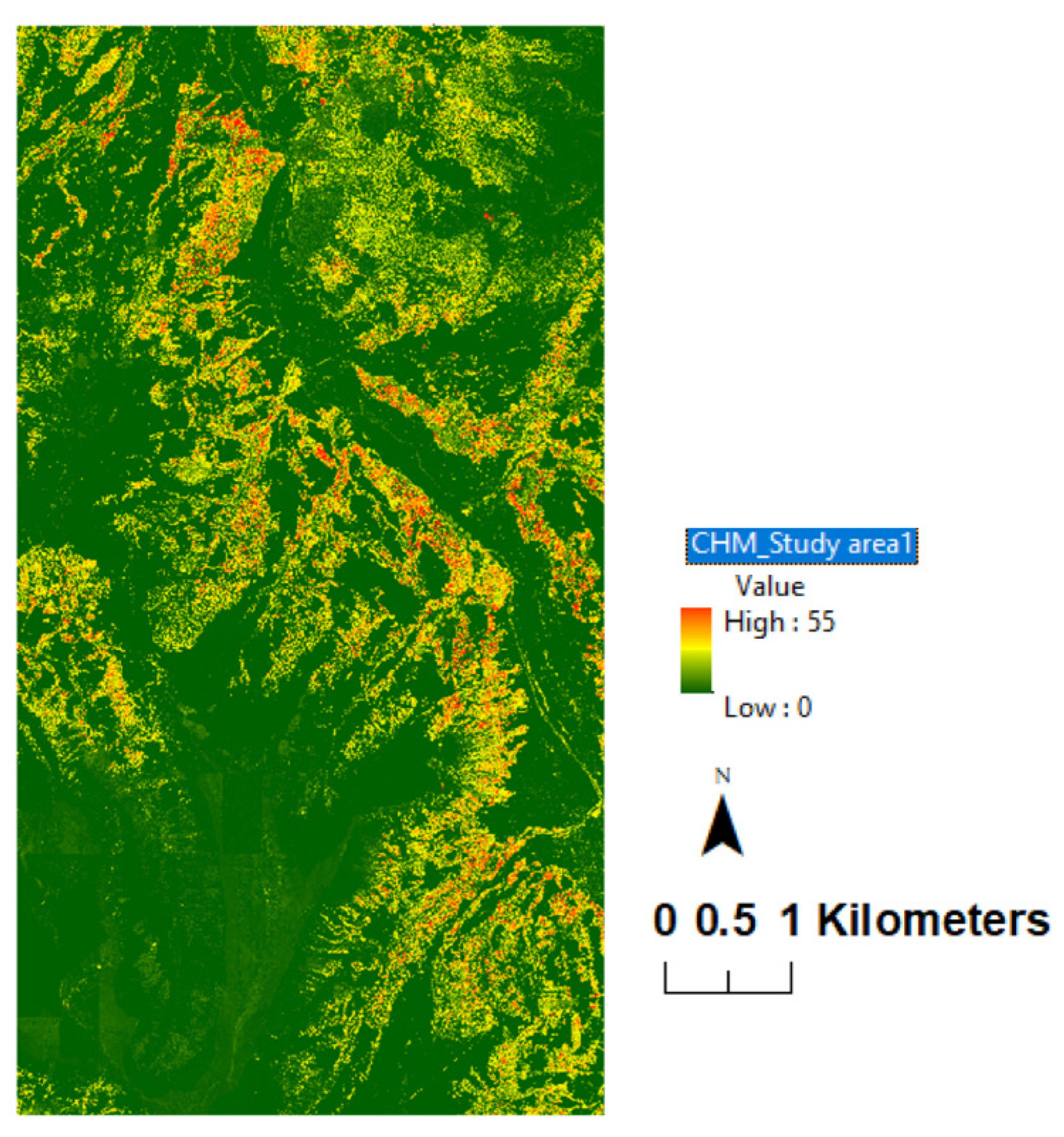


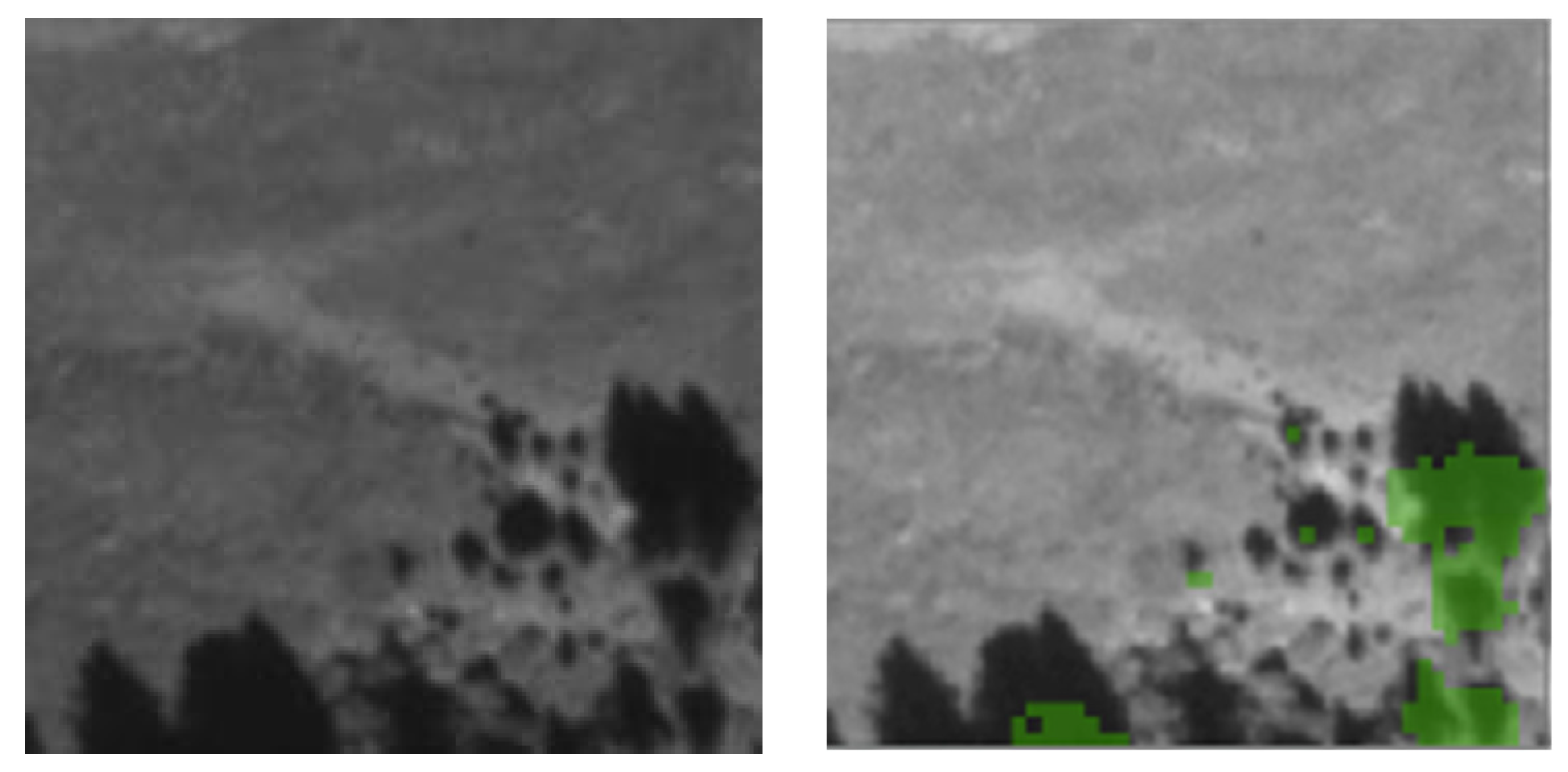
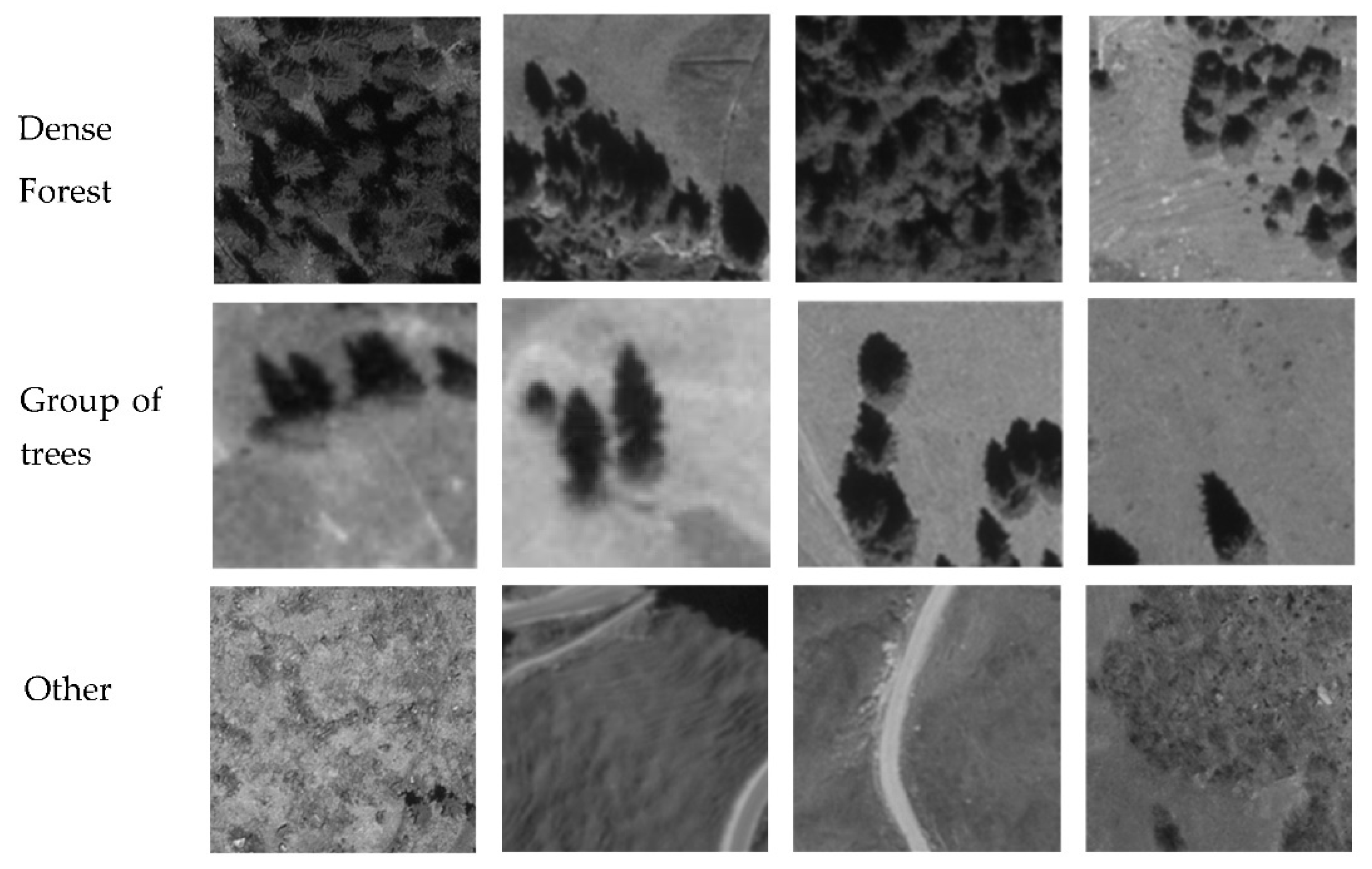
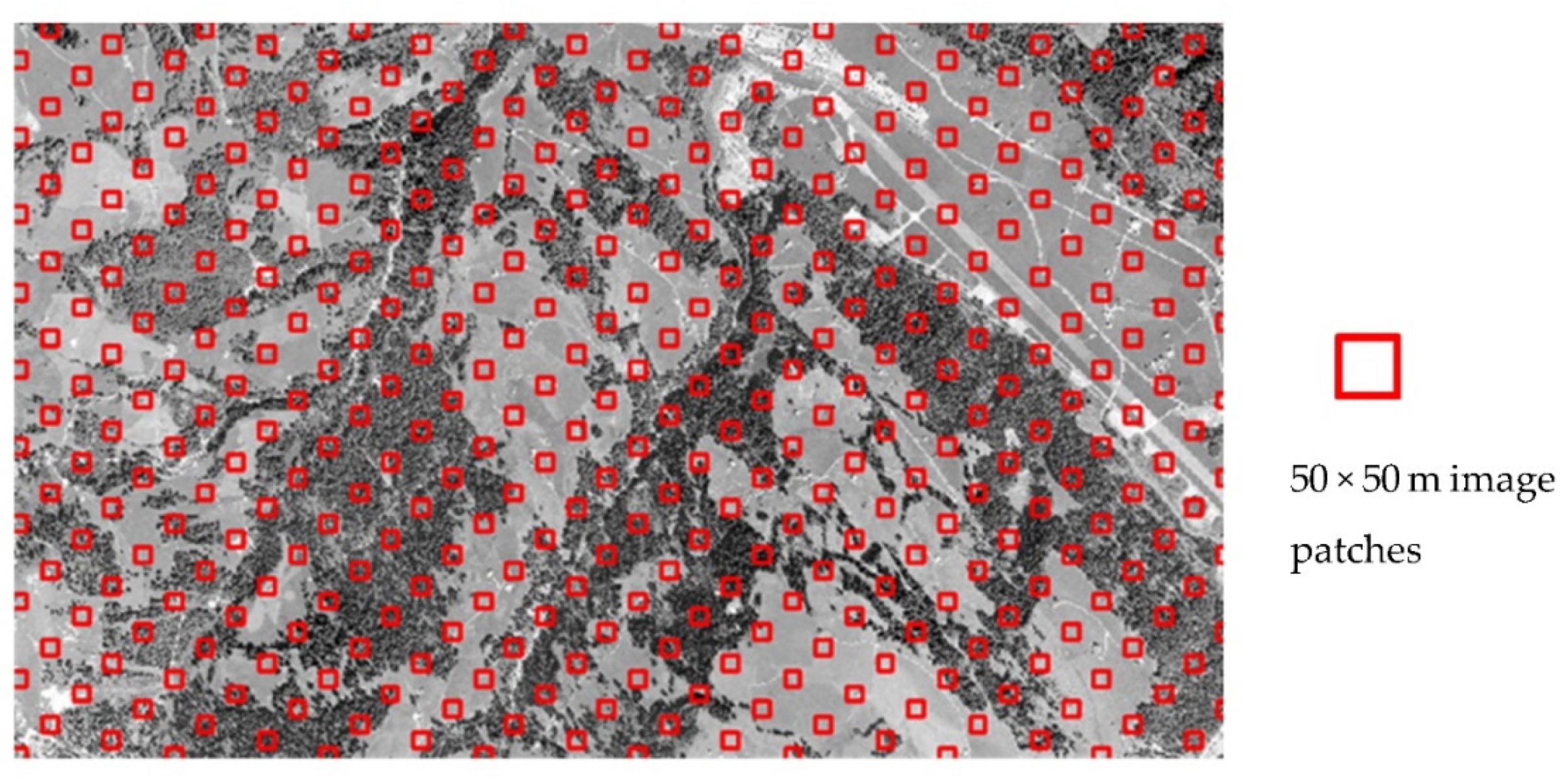
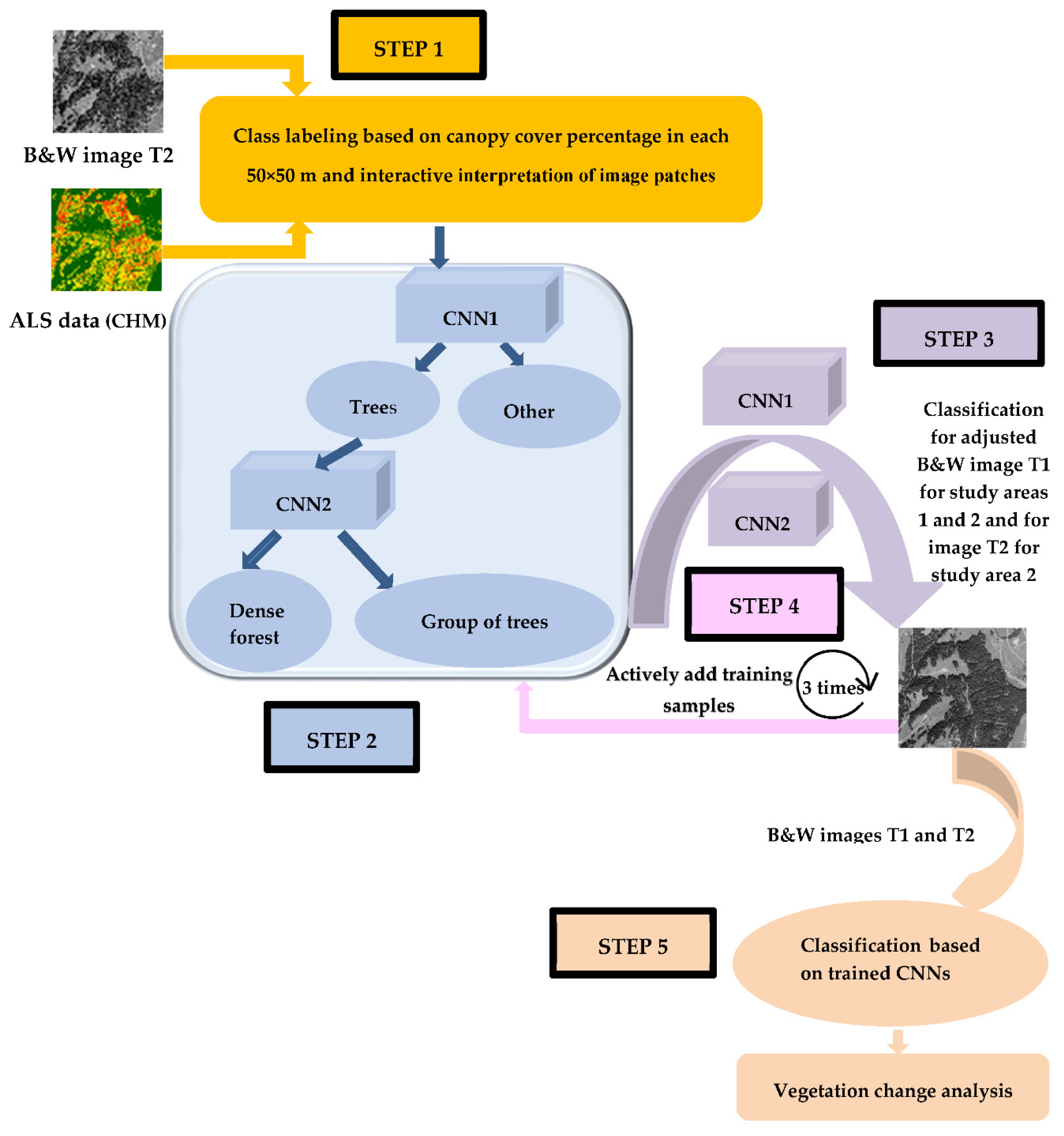

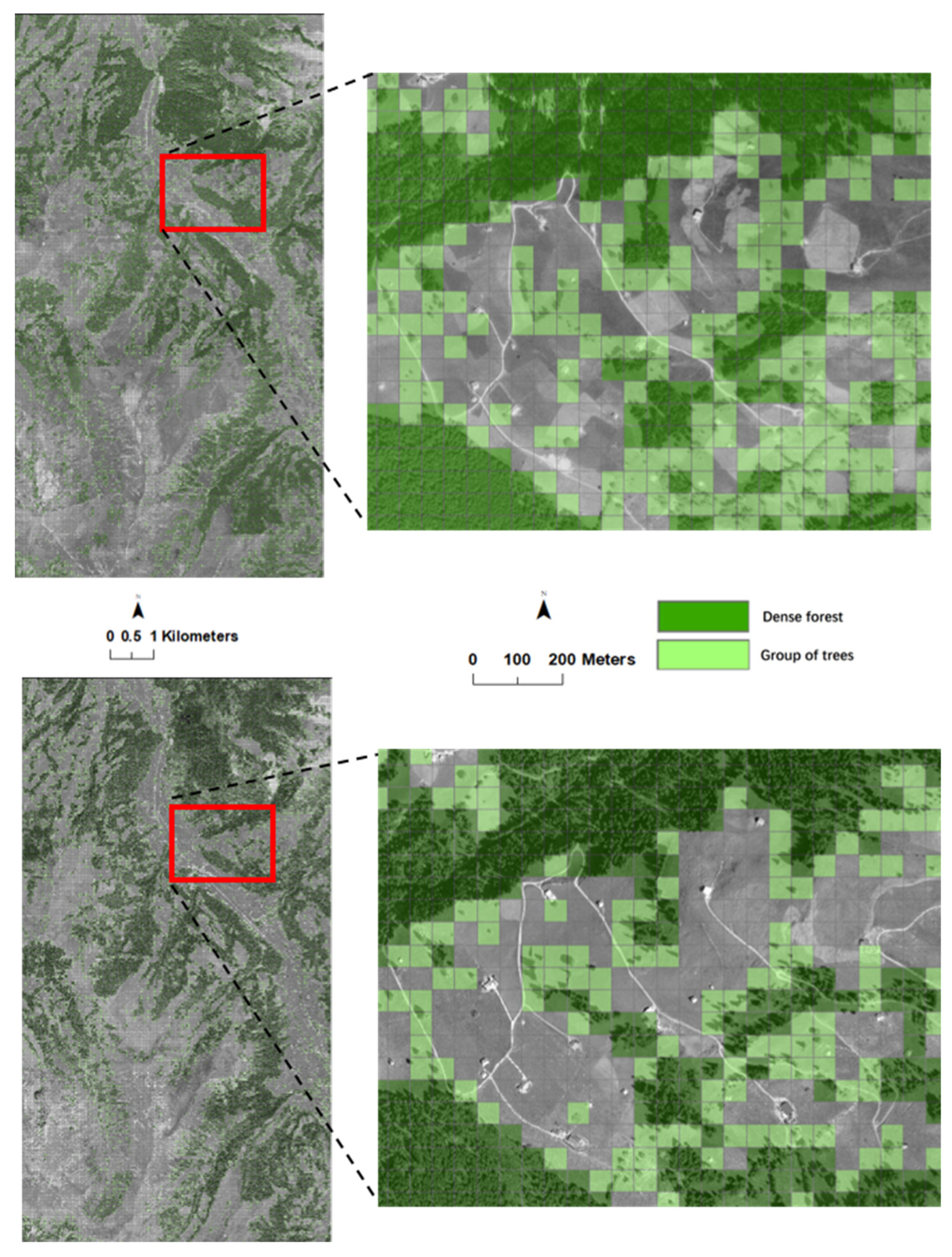
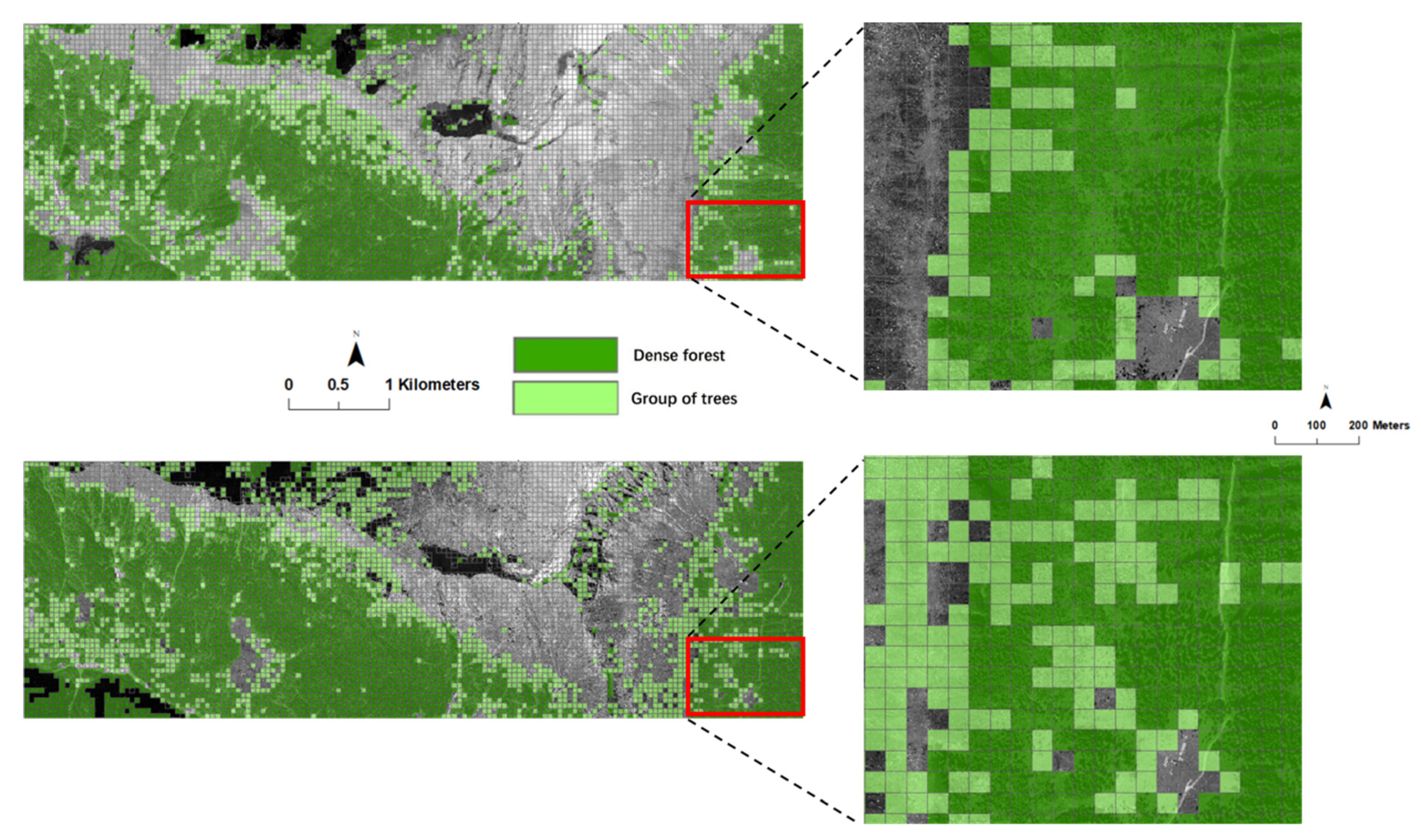

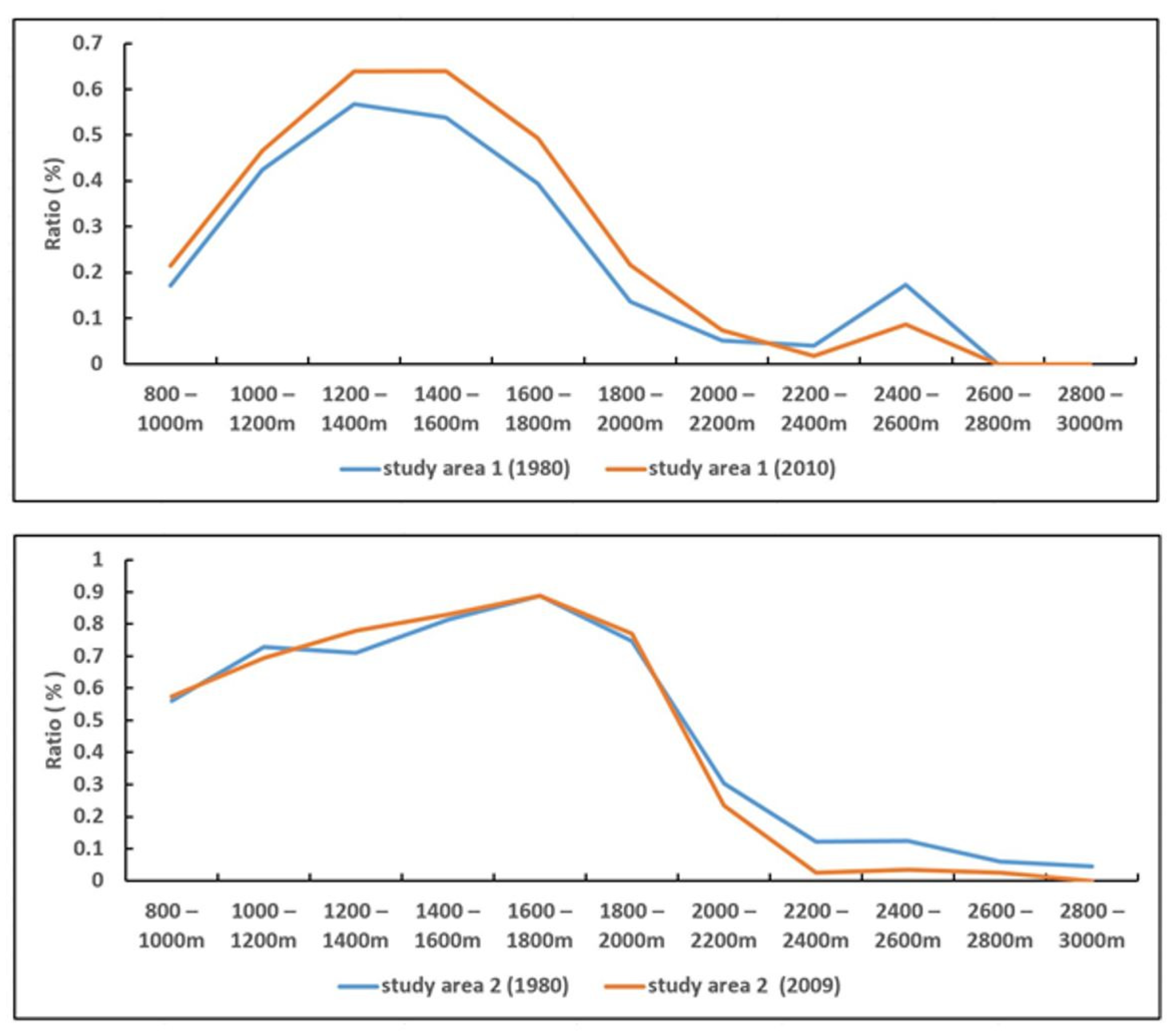
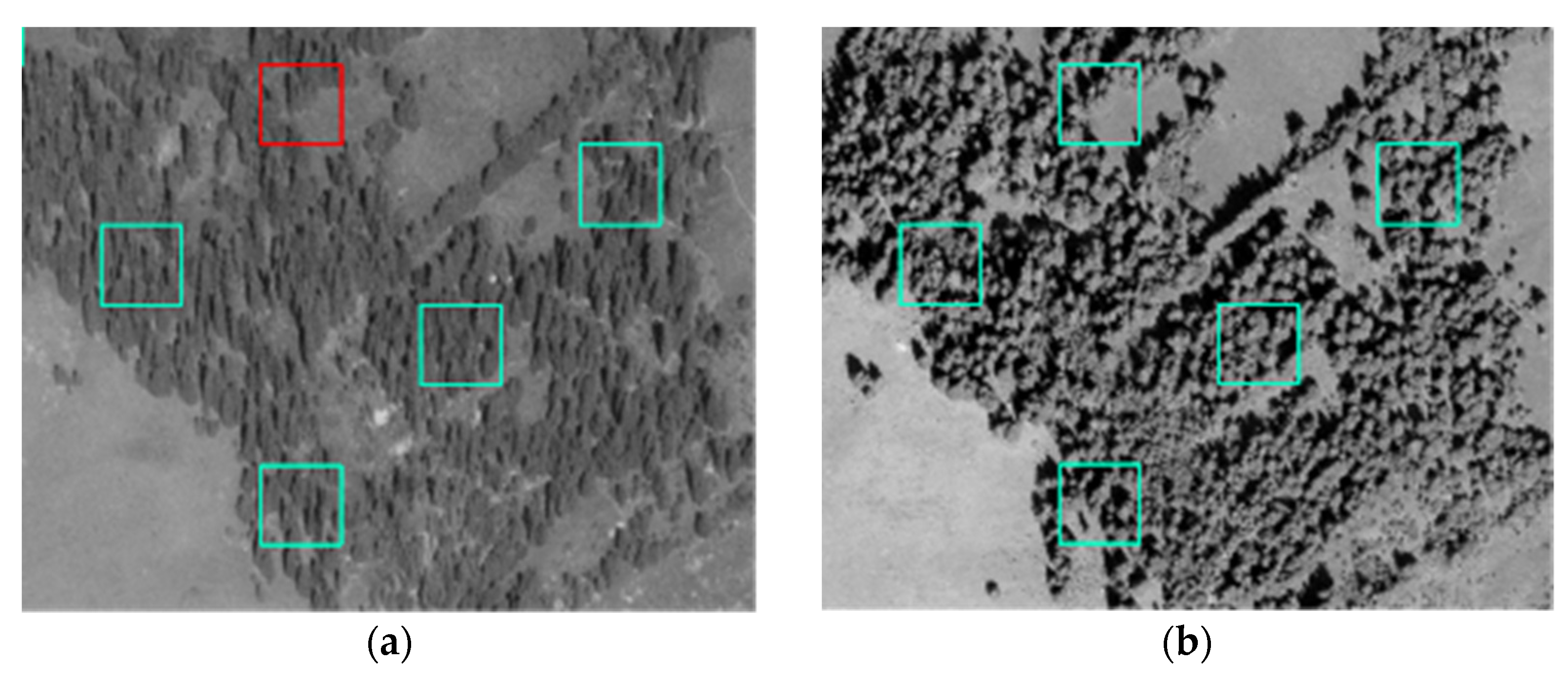
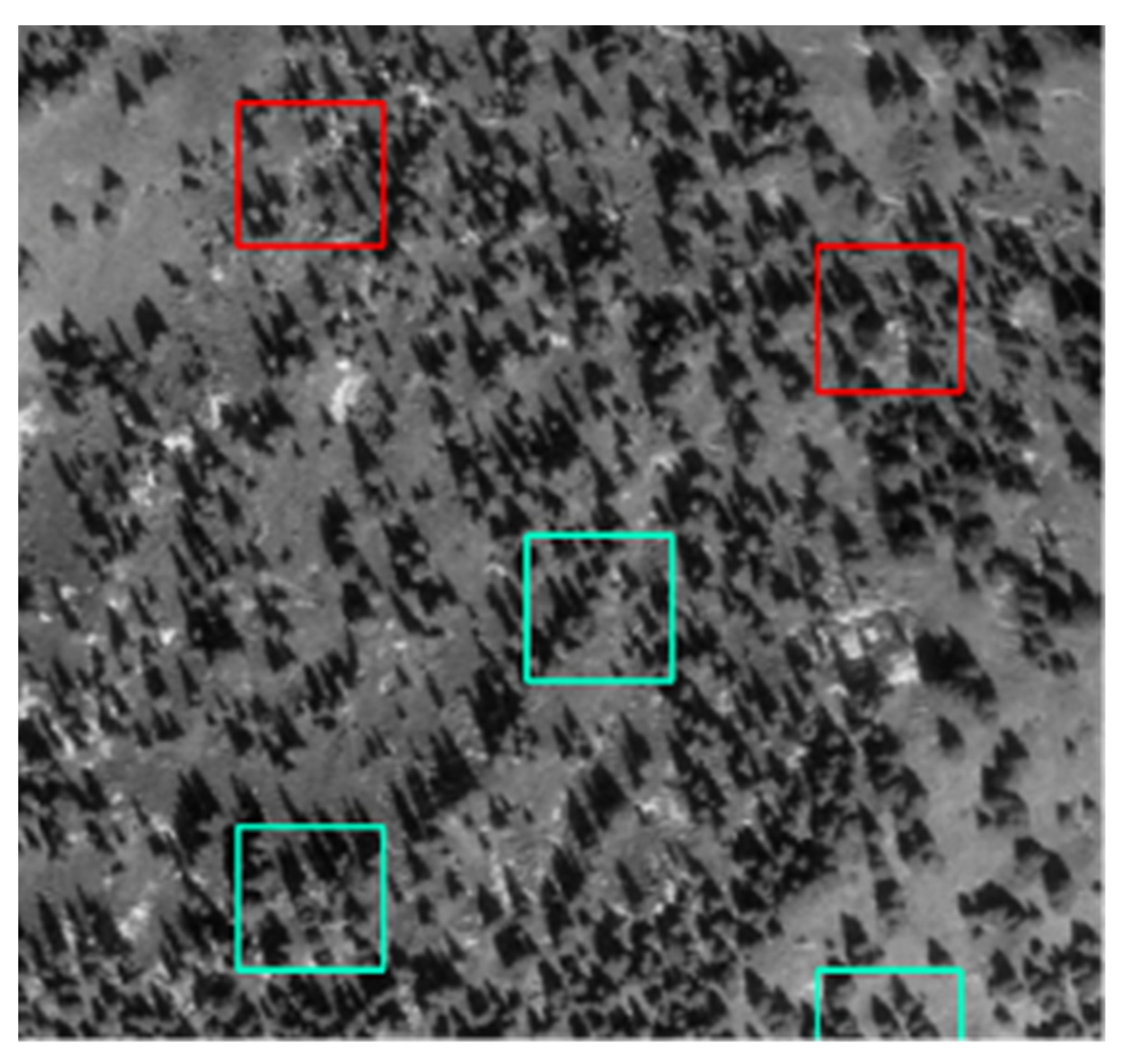
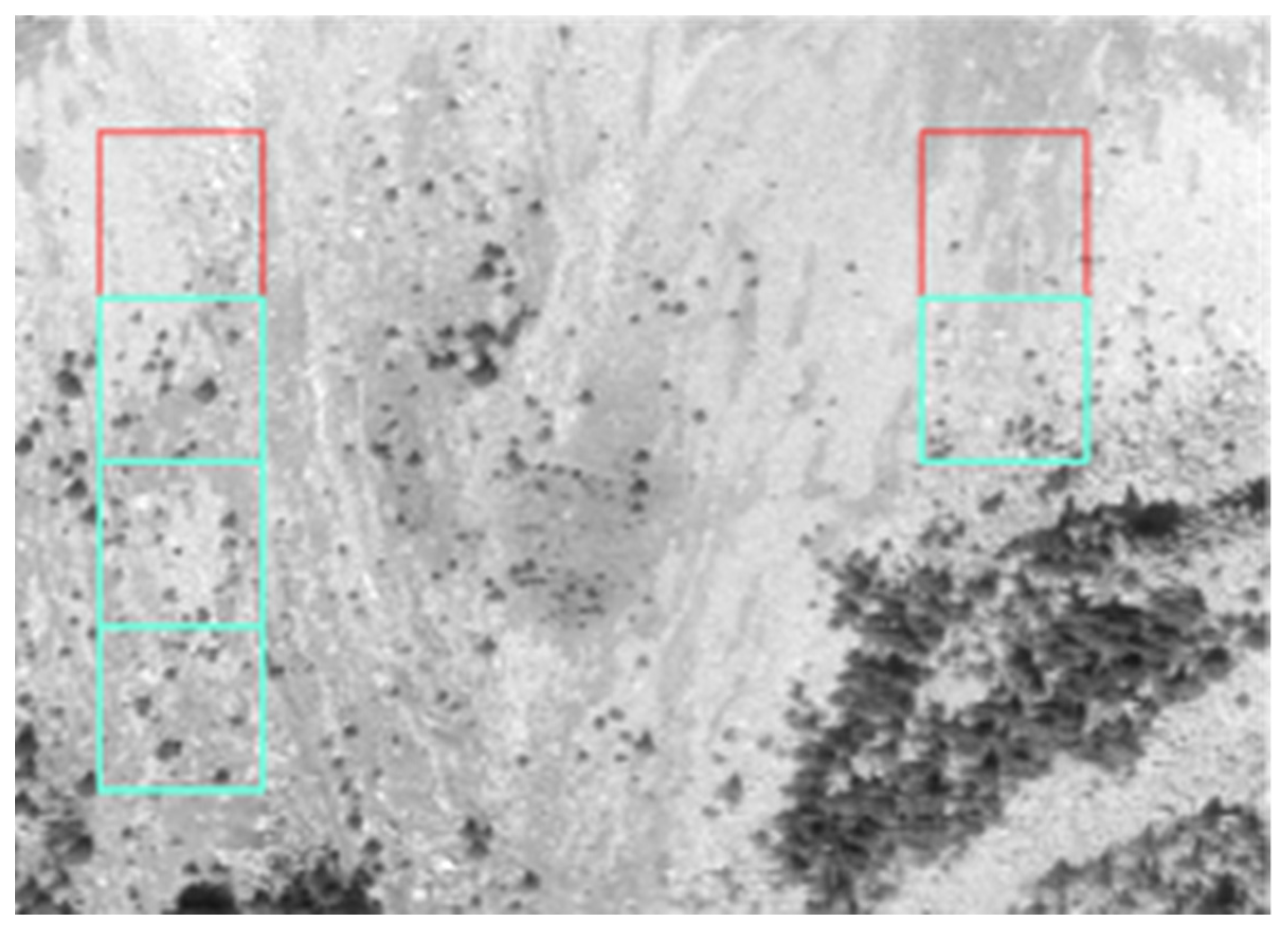
| Structure Class | Description |
|---|---|
| Dense forest | >20% CC height value of pixels >5 m |
| Group of trees | 2–20% CC height value of pixels >5 m and <5% CC height value of pixels 3–5 m |
| Other | (1) <2% CC height value of pixels >5 m and >5% CC height value of pixels 3–5 m (2) <1% CC height value of pixels 3–5 m |
| Class | Agreement | Study Area 1 | Study Area 2 | |
|---|---|---|---|---|
| Img_T1 (1980) | Img_T1 (1980) | Img_T2 (2009) | ||
| Dense forest | User’s agreement | 0.94 | 0.83 | 0.97 |
| Producer’s agreement | 0.89 | 0.95 | 0.88 | |
| Group of trees | User’s agreement | 0.67 | 0.47 | 0.51 |
| Producer’s agreement | 0.60 | 0.27 | 0.30 | |
| Other | User’s agreement | 0.83 | 0.83 | 0.76 |
| Producer’s agreement | 0.94 | 0.84 | 0.95 | |
| Overall agreement | 0.85 | 0.80 | 0.84 | |
| Class | Agreement | Study Area 1 Img_T1 (1980) | |
|---|---|---|---|
| Hierarchical CNN | Non-Hierarchical CNN | ||
| Dense forest | User’s agreement | 0.94 | 0.83 |
| Producer’s agreement | 0.89 | 0.88 | |
| Group of trees | User’s agreement | 0.67 | 0.67 |
| Producer’s agreement | 0.60 | 0.53 | |
| Other | User’s agreement | 0.83 | 0.78 |
| Producer’s agreement | 0.94 | 0.83 | |
| Overall agreement | 0.85 | 0.79 | |
Publisher’s Note: MDPI stays neutral with regard to jurisdictional claims in published maps and institutional affiliations. |
© 2022 by the authors. Licensee MDPI, Basel, Switzerland. This article is an open access article distributed under the terms and conditions of the Creative Commons Attribution (CC BY) license (https://creativecommons.org/licenses/by/4.0/).
Share and Cite
Wang, Z.; Ginzler, C.; Eben, B.; Rehush, N.; Waser, L.T. Assessing Changes in Mountain Treeline Ecotones over 30 Years Using CNNs and Historical Aerial Images. Remote Sens. 2022, 14, 2135. https://doi.org/10.3390/rs14092135
Wang Z, Ginzler C, Eben B, Rehush N, Waser LT. Assessing Changes in Mountain Treeline Ecotones over 30 Years Using CNNs and Historical Aerial Images. Remote Sensing. 2022; 14(9):2135. https://doi.org/10.3390/rs14092135
Chicago/Turabian StyleWang, Zuyuan, Christian Ginzler, Birgit Eben, Nataliia Rehush, and Lars T. Waser. 2022. "Assessing Changes in Mountain Treeline Ecotones over 30 Years Using CNNs and Historical Aerial Images" Remote Sensing 14, no. 9: 2135. https://doi.org/10.3390/rs14092135
APA StyleWang, Z., Ginzler, C., Eben, B., Rehush, N., & Waser, L. T. (2022). Assessing Changes in Mountain Treeline Ecotones over 30 Years Using CNNs and Historical Aerial Images. Remote Sensing, 14(9), 2135. https://doi.org/10.3390/rs14092135







